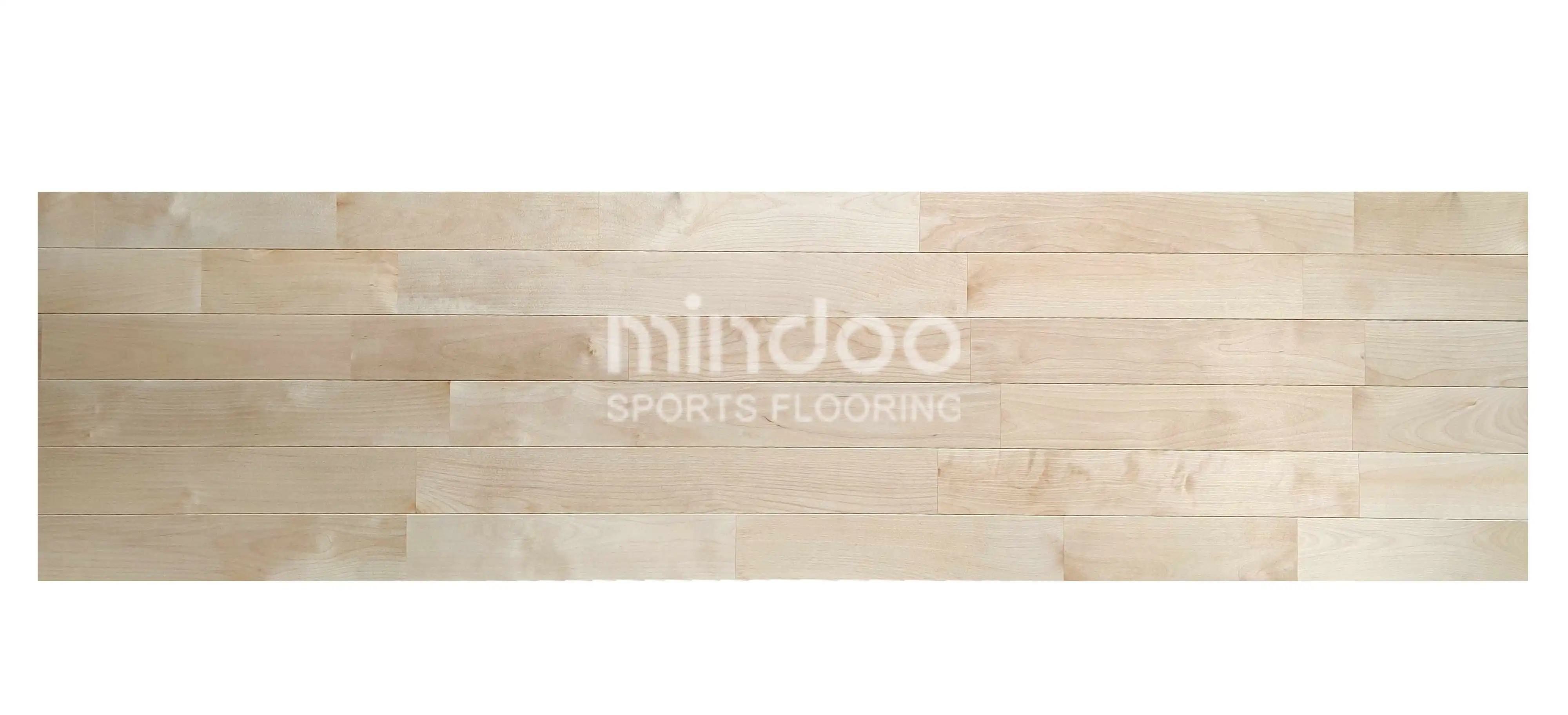Construction Steps and Technical Requirements for Refurbishing Sports Wood Flooring
Sports wood flooring, as a critical component of high-intensity usage venues, inevitably faces issues such as wear, aging, and even damage over time. Therefore, timely refurbishment not only extends the lifespan of the venue but also ensures the safety and comfort of athletes. Refurbishing sports wood flooring is not merely a superficial repair job; it is a meticulous technical task involving multiple steps and strict technical requirements. This article will detail the construction steps and related technical requirements for refurbishing sports wood flooring.
1. Pre-Construction Preparation: Assessment and Planning
The refurbishment of sports wood flooring begins with a detailed on-site assessment to accurately determine the extent of wear and the specific areas requiring refurbishment. Typically, construction personnel use professional instruments to measure parameters such as floor flatness, hardness, and moisture content. These data points help in deciding the specific refurbishment plan.

Technical Requirements:
Construction personnel must be proficient in using various assessment tools, such as laser levels and wood hardness testers. Based on the assessment results, they should determine whether large-scale replacement or localized repairs are needed. For severely aged or cracked wood flooring, replacement of floor panels may be necessary rather than just sanding or coating.
Data Support:
Approximately 30% of sports wood flooring refurbishments require partial board replacement, while 40% of refurbishment projects involve deep sanding and polishing.
2. Ground Cleaning and Old Floor Removal
After confirming the refurbishment plan, construction personnel need to thoroughly clean the ground, removing dust, stains, and other impurities to facilitate subsequent construction. For severely aged or damaged flooring, it may be necessary to remove the old floor layer to expose the underlying structure.
Technical Requirements:
During the removal process, construction personnel must take special care to avoid damaging the underlying structure or disturbing the floor's support system. The construction team should possess skilled removal techniques and use specialized tools, such as electric screwdrivers and flat shovels, to ensure safe and precise operations.
3. Sanding and Surface Treatment
The floor surface often develops scratches and wear due to prolonged use. One of the core steps in refurbishment is sanding the floor to restore a smooth and even surface. Sanding removes old coatings and stains, creating an ideal surface for new coatings to adhere to.

Technical Requirements:
Sanding requires selecting the appropriate sandpaper or sanding equipment based on the floor's hardness and wear level. Construction personnel must master the use of sanding machines to ensure even sanding and avoid over-sanding, which could damage the wood. Additionally, special attention must be paid to detailed areas such as corners and seams to ensure no spots are missed.
Data Support:
According to relevant statistics, 80% of wood flooring refurbishment projects require sanding to a depth of 1-2 mm to ensure the surface is fully restored.
4. Repair and Filling
After sanding, construction personnel need to repair cracks, holes, or other damages on the wood floor. This process requires precise selection of filling materials that match the color and grain of the original wood to ensure the repairs are seamless.
Technical Requirements:
The choice of repair materials is crucial. Construction personnel must select appropriate fillers based on the type of wood, color, and extent of damage. Additionally, care must be taken to avoid air bubbles or impurities during the filling process, as these could affect the refurbishment quality.
5. Coating and Protective Layer Application
Once sanding and repairs are complete, the next step is coating. The coating not only enhances the floor's appearance but also improves its wear resistance, water resistance, and slip resistance. Construction personnel typically apply one or more layers of protective varnish to ensure the sports flooring performs well over extended use.
Technical Requirements:
Coating application requires strict control over the type of coating, application thickness, and drying time for each layer. Construction personnel should choose high-quality, environmentally friendly sports floor coatings, avoiding harmful substances to protect athletes' health. Each layer of coating must be applied evenly and allowed to dry fully to prevent unevenness, which could lead to slippery or discolored floors.

Data Support:
The quality of coating application directly affects the durability of sports flooring. Statistics show that high-quality coatings can extend the lifespan of wood flooring by 20%-30% and reduce repair costs due to wear.
6. Inspection and Post-Maintenance Guidance
After the refurbishment is complete, construction personnel need to conduct a detailed inspection to ensure all construction steps meet standards, with the floor surface being flat, smooth, and flawless. Additionally, the construction team should provide detailed post-maintenance guidance, such as regular cleaning and avoiding excessive moisture, to ensure the floor remains in optimal condition.
Technical Requirements:
Construction personnel should possess comprehensive maintenance knowledge and provide specific care recommendations based on the characteristics of different materials, ensuring the refurbished sports wood flooring maintains its excellent performance over time.
Data Support:
Proper post-maintenance can increase the lifespan of sports wood flooring by over 30%, significantly reducing the frequency of repairs and replacements.
Precision Operations Ensure Refurbishment Quality
Refurbishing sports wood flooring is a comprehensive project involving multiple steps. Construction personnel must have a solid theoretical foundation and rich practical experience. From on-site assessment to construction management, each step requires precision to ensure the final result meets standards. Only through strict technical requirements and precise construction processes can the quality and lifespan of sports wood flooring be guaranteed. For construction personnel, both technical skills and experience are indispensable. Only by fully mastering construction techniques can they achieve the best results during the refurbishment process.





